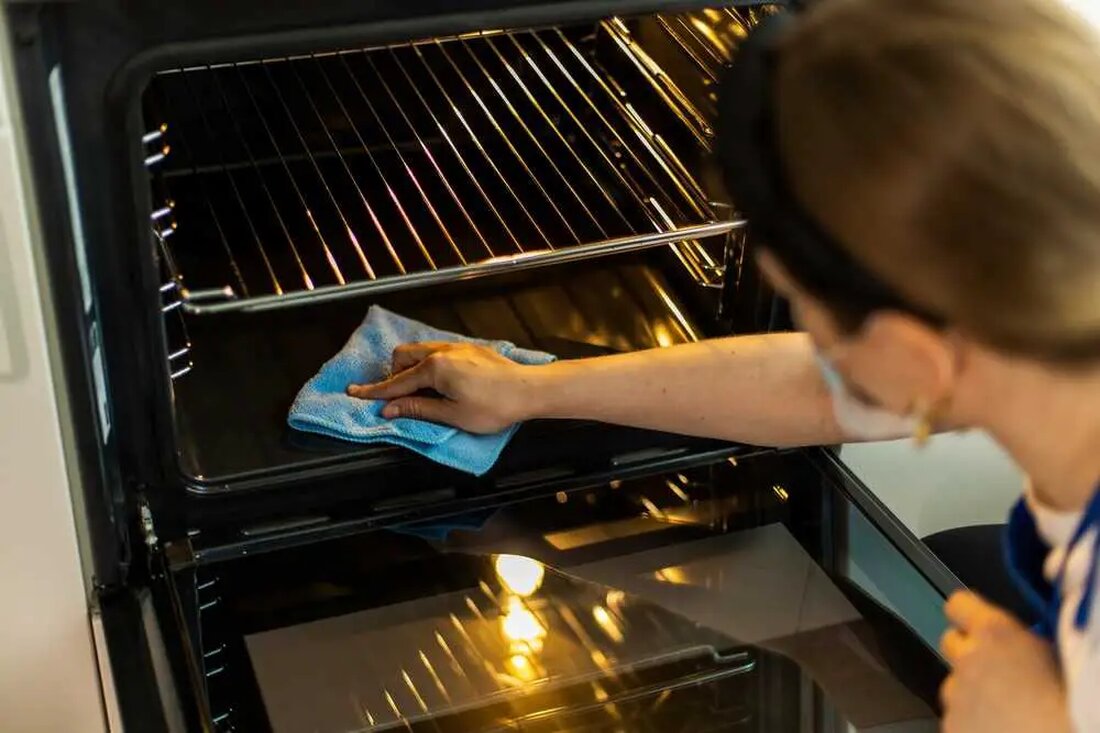Why You Shouldn't Leave Your Oven Dirty: The Health Risks
Why You Shouldn't Leave Your Oven Dirty: The Health Risks Neglecting to clean your oven can pose various health risks, including food contamination, fire hazards, and respiratory problems. If leftover food remains in the oven, it can char and produce potentially harmful compounds. Bacteria Buildup and Food Contamination Leftover food and grease can serve as a breeding ground for bacteria and mold, posing a risk of contamination to foods cooked in your oven. A dirty oven can harbor foodborne pathogens such as Salmonella and E. coli, which can cause serious illness if ingested. Fire hazard A build-up of leftover food and grease can...

Why You Shouldn't Leave Your Oven Dirty: The Health Risks
Why You Shouldn't Leave Your Oven Dirty: The Health Risks
Neglecting to clean your oven can pose various health risks, including food contamination, fire hazards, and respiratory problems. If leftover food remains in the oven, it can char and produce potentially harmful compounds.
Bacterial formation and food contamination
Leftover food and grease can serve as a breeding ground for bacteria and mold, posing a risk of contamination to food cooked in your oven. A dirty oven can harbor foodborne pathogens such as Salmonella and E. coli, which can cause serious illness if ingested.
Fire hazard
A buildup of leftover food and grease can increase the risk of oven fires. The National Fire Protection Association states that uncleaned and grease-stained cooking equipment is a leading cause of home fires.
Respiratory problems
Charred food scraps can release smoke and particles into the air, potentially causing respiratory problems, especially in people with asthma or other respiratory illnesses. Research suggests that poorly maintained cooking equipment can contribute to poor indoor air quality, which is often made worse by smoke and particles from dirty ovens, and can contribute to the development of chronic respiratory diseases.
Changed taste and quality of food
The remains of old charred food can transfer unwanted flavors to your dishes, altering their taste and quality. Additionally, the uneven heat distribution in a dirty oven can result in food not being cooked properly, which not only affects the taste but also poses health risks if the food is undercooked.
Exposure to harmful compounds
Burnt food scraps can produce potentially harmful compounds like acrolein, which has been linked to irritation of the eyes, nose, throat and lungs, according to an analysis published in BioMed Research International.
Energy inefficiency
A dirty oven has to work harder to reach the desired temperature, which uses more energy. This not only leads to a higher electricity bill, but also pollutes the environment due to higher energy consumption.
Traditional oven cleaning methods
When dealing with a dirty oven, people often resort to traditional cleaning methods that, while effective, can sometimes have negative effects on our health and the environment. Below is an overview of traditional cleaning methods and their impact on health and the environment:
Self-cleaning ovens
This option is easy to use and requires no chemical cleaners or strenuous scrubbing. The oven heats up to around 480 degrees Celsius and turns leftover food into ash that can be easily wiped away. However, this method locks out the oven for three to five hours and can uncomfortably heat up the kitchen during warmer seasons. Additionally, this method can be energy intensive, resulting in higher power consumption, and may not effectively remove stubborn stains and grease. The high temperatures can also release unpleasant odors and potentially harmful fumes.
Commercially available oven cleaners
Commercial oven cleaners are readily available and easy to use, but they contain strong chemicals. Users should wear protective equipment such as gloves and masks and ensure adequate ventilation during use to avoid exposure to harmful chemical fumes. The chemicals used can also be harmful to the environment and, when disposed of, pollute the environment or cause damage to ecosystems.
Scrubbing and scraping
This method can be effective for removing difficult stains and charred food residue, but can be labor-intensive and time-consuming. The use of abrasive materials can also scratch and damage the interior surfaces of the oven, affecting the lifespan and efficiency of the oven.
Environmentally friendly and natural alternatives to oven cleaning
For those who prioritize sustainability and want to avoid chemical exposure, there are several eco-friendly and natural alternatives.
Baking soda and vinegar method
Mixing baking soda and water creates a paste that acts as an abrasive, softening charred food particles and loosening dirt. Applying vinegar can improve the cleaning effect of baking soda by breaking down burnt foods more effectively. This method is environmentally friendly and poses no risk of chemical exposure, but requires some scrubbing and may not be as quick as chemical cleaners. Adding essential oils like lemon or lavender can leave a pleasant, refreshing scent after cleansing.
Baking soda and lemon method
This method involves sprinkling baking soda in the oven, scrubbing with water, and then using lemon water to clean the baking soda. Lemon, being acidic, enhances the cleaning effect of baking soda and leaves a pleasant citrus scent. This method is environmentally friendly and avoids chemical exposure to ensure a safer cleaning experience. Adding coarse salt to the mix can increase abrasion effectiveness and help remove stubborn stains more effectively.
Steam cleaning method
Steam cleaning is an efficient DIY alternative to the self-cleaning cycle. Placing a cookware filled with water in the oven and heating to 450 degrees Fahrenheit for at least 15 minutes will loosen the dirt and make scrubbing easier. This method is environmentally friendly, uses less energy compared to the self-cleaning cycle, and avoids chemical exposure, but may require some effort to remove stubborn stains. Adding a cup of white vinegar to the water can improve the steam-forming cleaning effect and break down grease and food particles more effectively.
Don't forget to clean these parts of your oven
Oven cleaning involves more than just cleaning the interior surfaces. Each component requires special attention to ensure the device is thoroughly cleaned and maintained. Here are specific strategies for cleaning different parts of the oven efficiently and safely:
oven racks
The metal racks should be cleaned separately regardless of the cleaning method chosen for the oven interior. Remove the racks and place them in boiling water mixed with dishwasher detergent in a large basin, sink, or bathtub. After soaking for two hours, brush off any residue with a stiff brush or steel sponge. Rinse, dry and return to the cleaned oven. However, never use steel wool on the interior surface of the oven as this may damage the steel surface or porcelain coating.
Oven knobs
Wipe the buttons with a damp microfiber cloth, adding soap if necessary. Avoid spraying directly to prevent liquid from getting behind the buttons and potentially shorting out the control panel. Instead, spray a cleaning cloth and wipe down the controls as recommended by Ron Shimek, president of Mr. Appliance, to avoid damaging the panel.
Glass oven doors
Create a paste using ½ cup baking soda and 3 tablespoons dish soap

 Suche
Suche
 Mein Konto
Mein Konto
